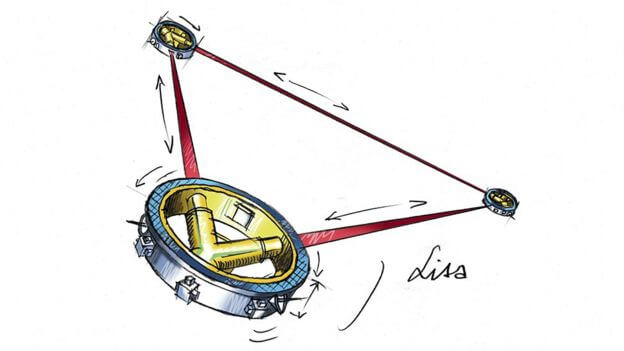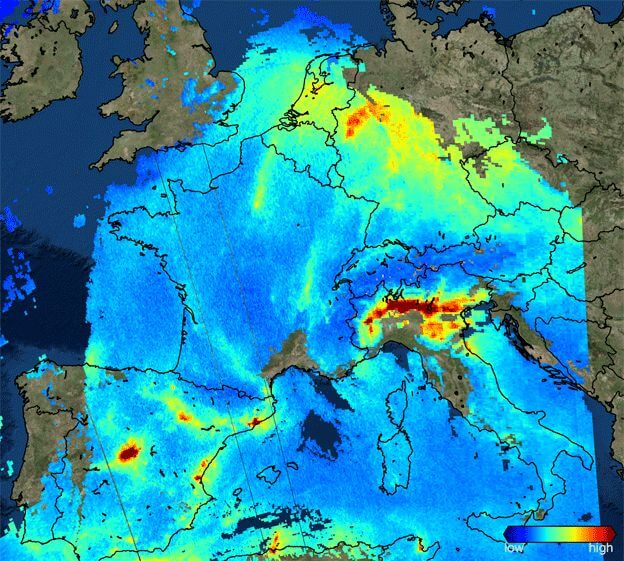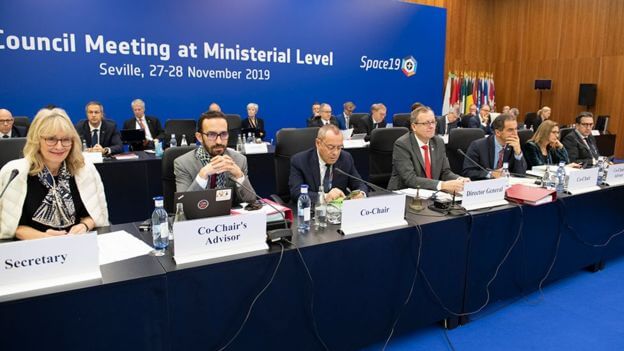
Stars come together for spectacular space missions
 18. 12. 2019
18. 12. 2019

Two of the most exciting space missions of the 30s will probably take place within a year of each other.
The member states of the European Space Agency (ESA) are ready to increase their science budget by 10% on Thursday. This would allow for the alignment of projects to build a large X-ray telescope and a trio of satellites to predict the collision of huge black holes. It is important that they fly at the same time, because the knowledge they bring is very closely complementary. When black holes connect, they send vibrations into the structure of space-time - so-called gravitational waves. And because these are violent events, these connections are likely to emit high-energy radiation as well. Scientists want to get the most complete picture of the issue, and the Athena X-ray telescope and the Lisa Observatory give them the opportunity to do so.
"The idea is that light and sound coexist," said Prof Günther Hasinger, ESA's Director of Science. "With gravitational waves, we hear the shaking universe. And matter falling into black holes creates light- "the last call for help" that is transmitted through X-rays, "he told BBC News.
Both projects represent a high technological demand and their preparation will take decades. They are so complex that ESA normally only launches missions of this type every five years.
However, the budget increase to be approved here in Seville, Spain, at the Council of Ministers organized by the Agency every three years, however, makes it possible to plan concurrent work on both the Athena and Lisa projects. It is assumed that the X-ray telescope could be put into operation in 2031 and the Gravitational Wave Observatory in 2032.
Raising the ESA science budget to nearly EUR 3 billion (GBP 2,6 billion) over the next five years was one of the smoothest discussions on the Council's launch date. Research ministers did not raise a single objection to the proposal, which means that on Thursday, when negotiations will be closed, it should go through without any problems.

Three of Lisa's satellites will work together to detect gravitational waves
The Council is now discussing a large EUR 12,5 billion (GBP 10,7 billion) space program package over three years or EUR 14,3 billion (GBP 12,3 billion) for five years.
Another costly item is Earth observation, a key element of which is the recommendation to extend the Copernicus program, which includes sets of Sentinel satellites to monitor the state of our planet.
ESA already manufactures six sensor systems in this program and aims to start planning for six more after the Seville meeting. The agency asked ministers for EUR 1,4 billion, and at the end of the day talks were even worth EUR 1,7 billion, according to the BBC. The figures may still change during Thursday's ongoing debate, but this is already a very impressive amount, highlighted mainly by France and Germany.

Sentinel DATA (2017) Nitrogen Dioxide: Sentinel satellites collect planetary health information
The sum that the United Kingdom will eventually offer will be interesting. This is because Copernicus is largely an EU-supported project and Britain should leave this political bloc in January. However, it will be possible for the United Kingdom to rejoin the Union as a 'third country' at a later stage. Brussels Commissioner for Space Elżbieta Bieńkowska said she hopes to do so.
"We, Europe, are leaders in the fight against climate change. Copernicus will be our most important tool in these activities. We need all European countries on board, which means that we also need the United Kingdom as a partner, "she told reporters.
Any investment that Britain invests in the Copernicus program together with ESA will, of course, be reflected in a similar increase in science and research budgets for national space companies.

Aces presented several billion euros to the Member States
Comments on the meeting of the Council of Ministers after the first day always contain a "health warning". The scope of the bids submitted may - and often does - change overnight. Negotiations are often on the verge of political endurance, as different countries seek support for projects in their own interest.
For example, in the area of space security, ESA has designed a mission called Hera, which plans to visit an asteroid to learn more about the Earth-threatening cosmic stones. In the same portfolio is a proposal called Lagrange, a satellite that would observe the Sun to warn of its dangerous explosions. Germany wants Heru; The United Kingdom then prefers Lagrange.
"It's humanity's job to protect the Earth from asteroids, so we're focusing on Hera," said Thomas Jarzombek, Germany's space policy coordinator. "And we think implementing both of these big projects would be too challenging."
Germany and the United Kingdom will be busy on Thursday for the support of the other Member States.
By: Jonathan Amos





 1
1